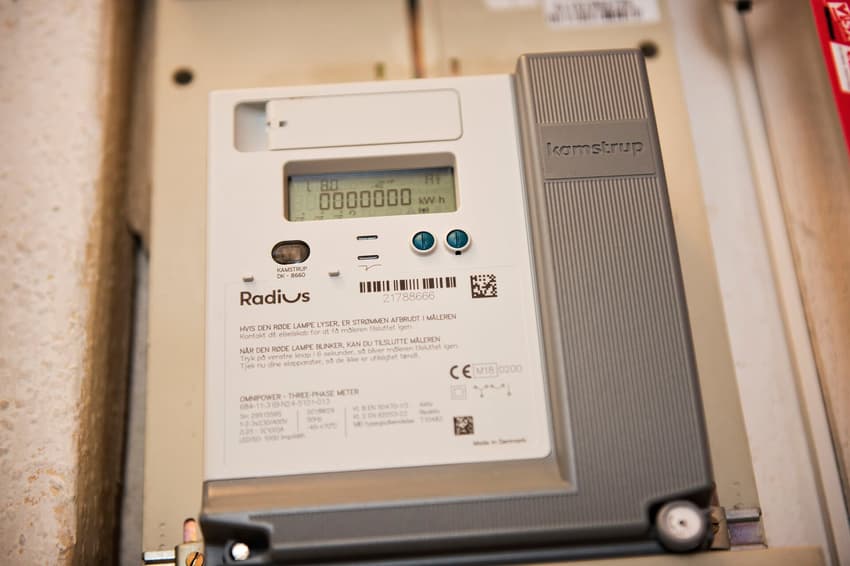What can ‘negative’ electricity price in Denmark do for your bill?

The hourly rate for electricity is set to take a big tumble in Denmark on Wednesday as windy weather conditions give production a big bump.
A negative unit price is possible this afternoon, such is the extent of the price drop according to energy stock exchange Nord Pool.
Unfortunately, this doesn’t mean you will be paid for switching the lights on, because taxes and transport costs must still be added to the base price.
Nevertheless, it will be a good time to run appliances according to Kristian Rune Poulsen, senior consultant with sector organisation Green Power Denmark.
Lower electricity prices can be taken advantage of by setting timers on thirsty appliances like dishwashers and tumble dryers and running them at these times. This can include off-peak times of the day when there is less demand for power, as well as fluctuations related to production.
“Electricity prices are formed of the raw energy price, which will be a negative contribution [on Wednesday, ed.], and then we also pay to have the electricity transported and some taxes,” Poulsen explained.
“All in all, that means we still pay money to use electricity, but the amount will be somewhat lower than on the many other days when the electricity price is not negative,” he said.
READ ALSO: How a new app function can help cut your Danish electricity bill
Geographically, people in western Denmark will benefit the most from Tuesday’s price dip. The price west of the Great Belt Bridge will drop to 61.55 øre per kilowatt hour between 2pm and 3pm, including transport costs and taxes. That figure comes from energy provider Norlys.
Zealand and other parts of eastern Denmark will get a low rate of 62.69 øre per kWh between around 3pm and 4pm, according to Norlys data.
This year has seen a total of 302 hours in which the hourly electricity rate has dropped below zero, according to financial media Børsen. That beats the previous record from 2020.
“We have seen high prices [in 2023], but especially negative and very low electricity prices when we’ve had a lot of wind,” Poulsen said.
A second important factor affecting Danish electricity prices is solar power. An increased solar power capacity means that days with negative electricity unit prices due to sunny weather are also now becoming more common, according to the consultant.
“On the way out of the energy crisis it has become evident that all the sun and wind we’ve strived to get going in recent years has really begun to have its effect on electricity prices,” he said.
Comments
See Also
A negative unit price is possible this afternoon, such is the extent of the price drop according to energy stock exchange Nord Pool.
Unfortunately, this doesn’t mean you will be paid for switching the lights on, because taxes and transport costs must still be added to the base price.
Nevertheless, it will be a good time to run appliances according to Kristian Rune Poulsen, senior consultant with sector organisation Green Power Denmark.
Lower electricity prices can be taken advantage of by setting timers on thirsty appliances like dishwashers and tumble dryers and running them at these times. This can include off-peak times of the day when there is less demand for power, as well as fluctuations related to production.
“Electricity prices are formed of the raw energy price, which will be a negative contribution [on Wednesday, ed.], and then we also pay to have the electricity transported and some taxes,” Poulsen explained.
“All in all, that means we still pay money to use electricity, but the amount will be somewhat lower than on the many other days when the electricity price is not negative,” he said.
READ ALSO: How a new app function can help cut your Danish electricity bill
Geographically, people in western Denmark will benefit the most from Tuesday’s price dip. The price west of the Great Belt Bridge will drop to 61.55 øre per kilowatt hour between 2pm and 3pm, including transport costs and taxes. That figure comes from energy provider Norlys.
Zealand and other parts of eastern Denmark will get a low rate of 62.69 øre per kWh between around 3pm and 4pm, according to Norlys data.
This year has seen a total of 302 hours in which the hourly electricity rate has dropped below zero, according to financial media Børsen. That beats the previous record from 2020.
“We have seen high prices [in 2023], but especially negative and very low electricity prices when we’ve had a lot of wind,” Poulsen said.
A second important factor affecting Danish electricity prices is solar power. An increased solar power capacity means that days with negative electricity unit prices due to sunny weather are also now becoming more common, according to the consultant.
“On the way out of the energy crisis it has become evident that all the sun and wind we’ve strived to get going in recent years has really begun to have its effect on electricity prices,” he said.
Join the conversation in our comments section below. Share your own views and experience and if you have a question or suggestion for our journalists then email us at [email protected].
Please keep comments civil, constructive and on topic – and make sure to read our terms of use before getting involved.
Please log in here to leave a comment.